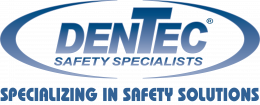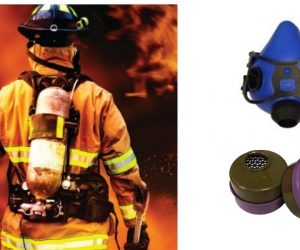Every day in Canada, 700 workers sustain on-the-job eye injuries, according to information from the Canadian National Institute for the Blind (CNIB). Many of these injuries result in one or more days of lost work. Protecting one’s vision at work, in particular those who work in environments where hazards to the eyes are present, is everyone’s responsibility. Employers have a legal obligation to take every reasonable precaution to protect workers by making sure that the necessary safety equipment are provided, used properly and maintained.
The American National Standards Institute (ANSI) establishes standards for minimum performance and use requirements for eyewash and shower equipment. The ANSI/ISEA Z358.1-2014 for Emergency Eyewash and Shower Equipment detailed guidelines to which the Occupational Safety and Health Administration (OSHA), State OSHA and other regulatory agencies commonly refer.
Canadian Provincial authorities also typically refer to ANSI standards when auditing for or advising proper requirements for emergency eyewash showers.
Where Should Emergency Eyewash Stations Be Located?
As per the ANSI Z358.1 Guidelines emergency eyewash stations need to be located within a 10 second walk or 55 feet of where you are working with chemicals. For particularly caustic or corrosive chemicals, emergency eyewash stations should be located immediately adjacent to the working area.
On the product SDS sheet it will state the First Aid measures and that if the chemical comes in contact with your eyes you need to flush for 15 minutes. Be sure to double check your SDS sheets for this language in order to verify if an emergency eyewash station is required.
Common Areas That Require Emergency Eyewash Stations:
- Dental Offices
- Medical Facilities
- Battery Charging Areas for Forklifts
- Janitorial Closets (when dispensing bulk chemicals and cleaning agents)
- Laboratories and Higher Education
- Oil and Gast Industry
- Industrial Applications
How Many Eyewash Stations Are Required
There is no written guidance on how many eyewash stations are required within a facility, however it is mandatory that wherever you are working with chemicals you have an eyewash station within 10 seconds or 55 feet and/ or on every level where chemicals are being used. Emergency eyewash stations should also be in an accessible location and identified with highly visible signs.

What Is a Plumbed Eyewash Station?
A plumbed eyewash station is a permanent fixture that is connected to a constant water source. It’s connected to a continuous source of potable water with sufficient flow and pressure for ANSI compliance and victim comfort.
It is important to note that with a plumbed unit you are constrained to your water source, so if you have a workplace using chemicals in one area, but the buildings water source is on the other side of the room, putting in a plumbed system can be quite expensive as you need to feed the water to the specific area and can require plumbing to be changed.
What Is a Portable Eyewash Station?
Portable eyewash stations are a flexible and cost effective solution that benefit many different work settings. These eyewash stations are ANSI compliant emergency response units that can be used in locations without water access. Unlike plumbed units, portable eyewash stations do not require a big water tank or on demand water system in order to ensure tepid water which is costly and unrealistic for many applications. With portable eyewash stations the water is always at room temperature. Also, when multiple eyewash stations are needed in one facility, it is much more economical to have multiple portable units rather than having to plumb several permanent stations.
*Frigid conditions require the installation of freeze protection equipment.

The GravityFlow44™ portable gravity operated eyewash is a great solution when plumbed water access is a challenge. The 9 gallon capacity provides a run time that is certified to the ANSI Z358.1 standard of 15 minutes and offers the best performing spray by simply pulling the activation door panel that provides hands free operation. Small size allows the product to sit on a counter or table and is sold with a wall bracket

How To Use a Portable Emergency Eyewash Station
Do Eyewash Stations Need Tepid Water?
Yes, eyewash stations require tepid water. As per ANSI Z358.1, water needs to be (lukewarm) 60–100°F (15.6–37.8°C) and encourages a full 15-minute flush or until medical personnel arrive. This is because water that is too cold with inhibit someone from using the shower/ eyewash for the full 15 minutes and water that is too hot will cause additional damage to the eyes.
How Often Should Eyewash Stations Be Checked Or Activated?
If you have a plumbed eyewash station, you should be doing a weekly activation or “bump” test to ensure that the plumbing is working. Clearing the lines regularly will safeguard there is no brown water sitting in the pipes. The last thing you want is rusty water in an open wound.
The same goes for portable eyewash stations, flush lines and tests by activating weekly. Inspection tags are often included with fixtures to document testing and to satisfy a safety audit. Every 3 months portable eyewash stations should be drained and filled up with potable water and add an anti-microbial solution.
For all eyewash stations, ANSI recommends a comprehensive annual inspection of the facility to evaluate the modified workspace, assess new hazards introduced into the area, and to identify fixtures needing replacement or repair.
For more information on emergency eyewash stations or for your business, contact one of our Safety Specialists or call us at 888-533-6832.
Dentec Safety is a leading manufacturer and distributor of safety products in the North America since 2004. Dentec Safety is dedicated to providing the highest quality safety products and solutions delivering enhanced value and comfort. Our expertise from decades of experience in Industrial Safety and our innovative design technologies have solidified us as thought leaders in the field. Protection and comfort are at the core of everything we do at Dentec. As a leading manufacturer of Safety Solutions, it is our mission to help organizations do the right thing, keep their employees safe and exceed Industry Health & Safety Standard.









